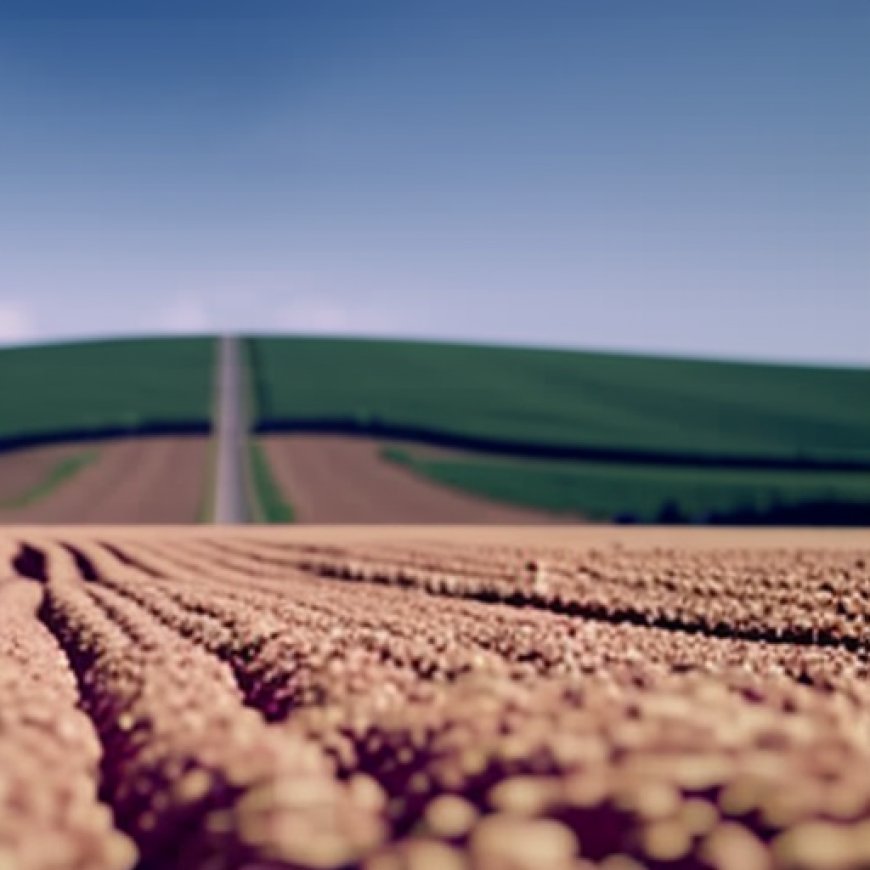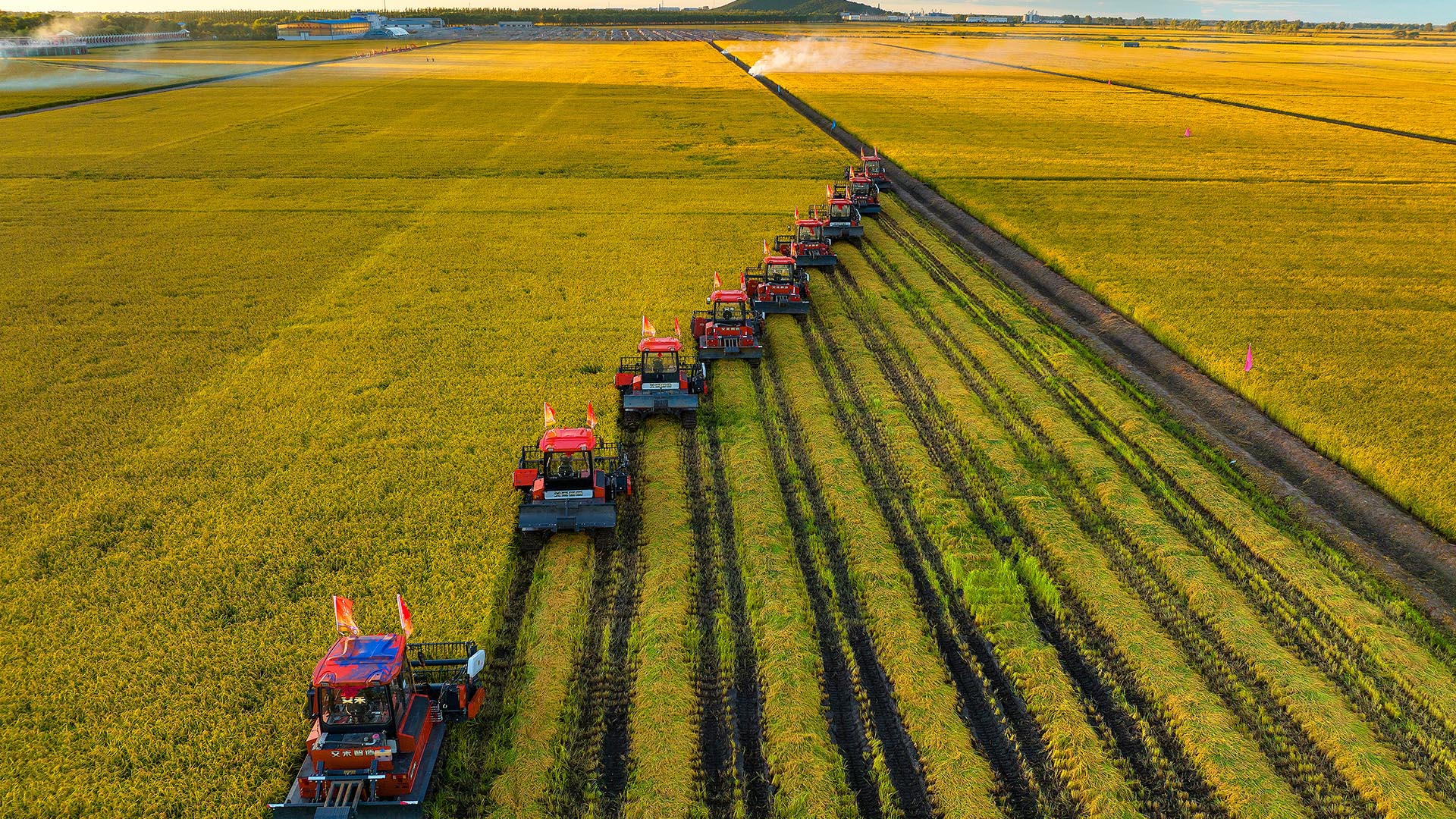Expert: Red line of arable land is a response to food security concerns
Expert: Red line of arable land is a response to food security concerns CGTN


Expert: Red line of arable land is a response to food security concerns
Introduction
China’s Central Commission for Financial and Economic Affairs recently held a meeting to discuss farmland protection, transformation, and utilization of saline-alkali land. During the meeting, Shi Xinjie, a research fellow at the China Academy for Rural Development at Zhejiang University, highlighted the significance of China’s red line of arable land as a response to food security concerns.
Sustainable Development Goals (SDGs)
The following Sustainable Development Goals (SDGs) are relevant to the topic:
- SDG 2: Zero Hunger
- SDG 11: Sustainable Cities and Communities
- SDG 12: Responsible Consumption and Production
- SDG 15: Life on Land
Discussion
China’s red line of arable land is a crucial measure taken to address food security concerns. By setting a limit on the conversion of arable land for non-agricultural purposes, China aims to ensure a sufficient and sustainable food supply for its population.
Food security is a pressing issue globally, and achieving SDG 2 (Zero Hunger) is a top priority for many countries. By protecting its arable land, China contributes to the global efforts of eradicating hunger and ensuring access to nutritious food for all.
In addition to addressing food security concerns, the protection and sustainable use of arable land also align with other SDGs. SDG 11 (Sustainable Cities and Communities) emphasizes the importance of sustainable land use planning and management, which includes preserving agricultural land to support urban populations.
Furthermore, SDG 12 (Responsible Consumption and Production) promotes sustainable agricultural practices and efficient use of resources. By safeguarding arable land, China encourages responsible consumption and production patterns, reducing the need for land conversion and minimizing environmental impacts.
Lastly, the preservation of arable land contributes to SDG 15 (Life on Land), which aims to protect, restore, and promote sustainable use of terrestrial ecosystems. Arable land plays a vital role in supporting biodiversity and ecosystem services, making its conservation crucial for maintaining a healthy planet.
Conclusion
China’s red line of arable land serves as a significant response to food security concerns. By setting limits on the conversion of arable land for non-agricultural purposes, China contributes to the achievement of multiple SDGs, including SDG 2 (Zero Hunger), SDG 11 (Sustainable Cities and Communities), SDG 12 (Responsible Consumption and Production), and SDG 15 (Life on Land). The protection and sustainable use of arable land are essential for ensuring a sufficient and sustainable food supply, promoting responsible land use, and preserving biodiversity and ecosystem services.
SDGs, Targets, and Indicators
-
SDG 2: Zero Hunger
- Target 2.4: Sustainable food production systems
- Indicator 2.4.1: Proportion of agricultural area under productive and sustainable agriculture
- Indicator 2.4.2: Average income of small-scale food producers, by sex and indigenous status
-
SDG 15: Life on Land
- Target 15.3: Land degradation neutrality
- Indicator 15.3.1: Proportion of land that is degraded over total land area
- Indicator 15.3.2: Proportion of land that is sustainably managed
Analysis
1. Which SDGs are addressed or connected to the issues highlighted in the article?
The issues highlighted in the article are connected to SDG 2: Zero Hunger and SDG 15: Life on Land.
2. What specific targets under those SDGs can be identified based on the article’s content?
Based on the article’s content, the specific targets identified are:
– Target 2.4: Sustainable food production systems under SDG 2
– Target 15.3: Land degradation neutrality under SDG 15
3. Are there any indicators mentioned or implied in the article that can be used to measure progress towards the identified targets?
Yes, there are indicators mentioned or implied in the article that can be used to measure progress towards the identified targets. For SDG 2, the indicators are:
– Indicator 2.4.1: Proportion of agricultural area under productive and sustainable agriculture
– Indicator 2.4.2: Average income of small-scale food producers, by sex and indigenous status
For SDG 15, the indicators are:
– Indicator 15.3.1: Proportion of land that is degraded over total land area
– Indicator 15.3.2: Proportion of land that is sustainably managed
These indicators can be used to track the progress of sustainable food production systems and land degradation neutrality.
SDGs, Targets, and Indicators
| SDGs | Targets | Indicators |
|---|---|---|
| SDG 2: Zero Hunger | Target 2.4: Sustainable food production systems | Indicator 2.4.1: Proportion of agricultural area under productive and sustainable agriculture Indicator 2.4.2: Average income of small-scale food producers, by sex and indigenous status |
| SDG 15: Life on Land | Target 15.3: Land degradation neutrality | Indicator 15.3.1: Proportion of land that is degraded over total land area Indicator 15.3.2: Proportion of land that is sustainably managed |
Behold! This splendid article springs forth from the wellspring of knowledge, shaped by a wondrous proprietary AI technology that delved into a vast ocean of data, illuminating the path towards the Sustainable Development Goals. Remember that all rights are reserved by SDG Investors LLC, empowering us to champion progress together.
Source: news.cgtn.com

Join us, as fellow seekers of change, on a transformative journey at https://sdgtalks.ai/welcome, where you can become a member and actively contribute to shaping a brighter future.








